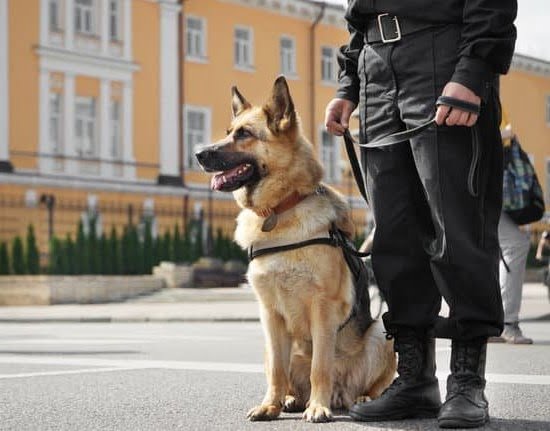Service dogs play a crucial role in providing assistance and support to individuals with disabilities, enhancing their quality of life and independence. These specially trained canines offer a wide range of services, from guiding the visually impaired to alerting individuals with hearing impairments to sounds in their environment. The question arises: where are dogs service trained at?
The training of service dogs involves a rigorous process that requires dedication, expertise, and patience. There are various types of service dogs tailored to specific roles based on the needs of the individual they will be assisting. From mobility assistance to medical alert dogs, each has a unique set of skills to fulfill their vital functions. But who trains these remarkable animals that go on to change lives and provide invaluable support?
Service dog training is typically carried out by specialized organizations, facilities, and programs that focus on teaching these canines the necessary skills and behaviors required for their designated tasks. These institutions employ experienced trainers who utilize different methods and techniques to ensure that service dogs excel in their roles. The training process is meticulous and intensive, aiming to equip these exceptional animals with the abilities needed to assist individuals with disabilities effectively.
Types of Service Dogs and Their Roles
Service dogs play a crucial role in assisting individuals with disabilities to navigate their daily lives more independently. There are various types of service dogs trained to perform specific tasks based on the needs of their handlers. One commonly recognized type is the guide dog, which assists individuals who are blind or visually impaired in navigating through different environments safely. These dogs are trained to avoid obstacles, stop at curbs, and find doors, among other essential tasks.
Another type of service dog is the hearing dog, which aids individuals who are deaf or hard of hearing by alerting them to important sounds such as alarms, doorbells, and even their own names. Hearing dogs are trained to make physical contact when they want to get their handler’s attention and lead them towards the source of the sound.
Additionally, there are mobility assistance dogs that help individuals with physical disabilities by providing support with tasks like opening doors, retrieving items, and pulling wheelchairs.
In addition to these common types of service dogs, there are also psychiatric service dogs that assist individuals with mental health conditions such as anxiety disorders, PTSD, and depression. These dogs provide comfort during stressful situations, interrupt harmful behaviors, and create a calming presence for their handlers.
The training for each type of service dog is tailored to meet the specific needs of the individual they will be assisting. where are dogs service trained at varies depending on the organization or program responsible for their training.
| Types of Service Dogs | Main Roles |
|---|---|
| Guide Dogs | Aid individuals who are blind or visually impaired |
| Hearing Dogs | Alert individuals who are deaf or hard of hearing to important sounds |
| Mobility Assistance Dogs | Help individuals with physical disabilities with daily tasks |
Who Trains Service Dogs
Service dogs play a crucial role in assisting individuals with disabilities, providing them with invaluable support and companionship. However, the process of training these service dogs is not an easy task and requires specialized knowledge and skills. So, who trains service dogs?
There are various organizations and facilities dedicated to the training of service dogs to ensure they meet the specific needs of their future handlers. These organizations often have experienced trainers who follow structured programs to prepare the dogs for their roles effectively. Here are some common places where service dogs are trained:
- Specialized Service Dog Training Centers: These centers focus solely on training service dogs for various types of disabilities, such as guide dogs for the visually impaired or mobility assistance dogs.
- Nonprofit Organizations: Many nonprofit organizations work towards providing highly trained service dogs to individuals in need, relying on volunteers and professional trainers to carry out the training process.
- Prison Programs: Some correctional facilities have programs where inmates are trained to work with service dogs, providing both the inmates and the dogs with valuable skills and opportunities for growth.
Each of these training facilities follows specific guidelines and methods to ensure that the service dogs are equipped with the necessary skills to assist their handlers effectively. By partnering with these organizations, individuals in need can benefit from having well-trained service dogs by their side.
The Process of Training Service Dogs
When it comes to training service dogs, the process is a complex and intensive one that requires dedication, patience, and expertise. Service dogs are trained to provide assistance and support to individuals with disabilities, whether physical or emotional. The training process involves teaching the dogs specific tasks and behaviors that will help them fulfill their roles effectively.
There are several key steps involved in the training of service dogs. These steps typically include basic obedience training, task-specific training based on the individual’s needs, socialization with various environments and people, as well as public access training. Throughout the process, trainers use positive reinforcement methods to encourage good behavior and discourage unwanted behaviors.
Here are some of the key aspects of the training process for service dogs:
- Basic Obedience Training: Teaching commands such as sit, stay, come, down, and heel.
- Task-Specific Training: Teaching tasks tailored to the individual’s needs, such as retrieving items, providing balance support, or alerting to medical conditions.
- Socialization: Exposing the dog to different environments, noises, people, and animals to ensure they can remain calm and focused in any situation.
- Public Access Training: Ensuring the dog is well-behaved and obedient in public spaces where they will be accompanying their handlers.
It is crucial that service dogs receive proper training from knowledgeable professionals to ensure they can perform their duties effectively. This raises an important question: where are dogs service trained at? Service dogs are typically trained at specialized facilities or programs dedicated to service dog training. These facilities provide a controlled environment where trainers can work closely with the dogs on their skills and behaviors, preparing them for life as a working service animal.
Where Service Dogs Are Trained
When it comes to training service dogs, the facilities and programs where these animals are trained play a crucial role in their development. Service dogs are trained in a variety of settings, including specialized training centers, nonprofit organizations dedicated to service dog training, and even within individual homes by experienced trainers. These facilities provide the necessary resources and environment for service dogs to learn and perfect the skills needed to assist individuals with disabilities.
One common setting where service dogs are trained is within accredited training centers that specialize in service dog training. These centers often have professional trainers who work with the dogs daily, providing structured lessons, socialization opportunities, and exposure to various environments to ensure they are well-prepared for their future roles. The facilities are equipped with everything needed for the dogs’ training, such as obstacle courses, obedience equipment, and simulated scenarios to mimic real-life situations.
Nonprofit organizations also play a significant role in training service dogs. These organizations typically rely on volunteers and donations to fund their programs. Many of them have established partnerships with local animal shelters or breeders to select suitable candidates for service dog training. Through their programs, these nonprofits not only provide valuable skills to the service dogs but also offer support and assistance to individuals with disabilities seeking a companion that can enhance their quality of life.
Service Dog Training Methods and Techniques
Positive Reinforcement Training
One of the most common methods used for training service dogs is positive reinforcement. This technique involves rewarding desired behaviors with treats, praise, or toys to encourage the dog to repeat those behaviors. By focusing on positive reinforcement rather than punishment, service dogs are more likely to learn quickly and develop a strong bond with their handlers. Positive reinforcement also helps create a positive association between performing tasks and receiving rewards, making the overall training experience enjoyable for the dog.
Clicker Training
Clicker training is another effective method used in service dog training. This technique involves using a clicker device that makes a distinct sound when pressed, followed by a treat reward for the desired behavior. The sound of the clicker serves as a marker for the exact moment the dog performs the desired action, allowing for clear communication between trainer and dog.
Clicker training helps service dogs learn new commands faster and provides precise feedback during training sessions. It is an efficient way to shape behaviors and improve communication between the handler and the dog.
Task-Oriented Training
In addition to general obedience training, service dogs undergo task-oriented training tailored to their specific roles and responsibilities. Depending on the type of disability they are trained to assist with, service dogs learn tasks such as retrieving items, opening doors, guiding visually impaired individuals, alerting to medical conditions, providing stability during mobility assistance, or responding to emergencies.
Task-oriented training focuses on refining each skill step by step through repetition and practice until the dog can perform reliably in real-life situations. This specialized approach ensures that service dogs can effectively meet the needs of their handlers and enhance their independence and quality of life.
How Long Does It Take to Train a Service Dog
Service dogs play a crucial role in assisting individuals with disabilities in their daily lives. These specially trained canines provide a wide range of services, from guiding the visually impaired to alerting individuals with hearing loss to various tasks such as retrieving items and opening doors. The bond between a service dog and their handler is built on trust, training, and mutual understanding, making them an indispensable part of their lives.
The Training Process
Training a service dog involves several key steps that are essential to ensure they can perform their duties effectively. From learning basic obedience commands to mastering specific tasks related to the individual’s disability, the training process can be complex and time-consuming. Professional trainers use positive reinforcement techniques to teach service dogs new skills while building a strong bond with them.
The Role of Consistency and Repetition
Consistency and repetition are crucial elements in the training of service dogs. Dogs learn through repetition, so consistent training methods help reinforce desired behaviors. By establishing clear cues and commands for each task, handlers can effectively communicate with their canine partners. Repetition allows the dogs to gradually master new skills and tasks until they can perform them reliably in various environments and situations.
Patience Is Key
Training a service dog requires patience from both the trainer and the handler. Each dog has its unique learning pace, so it is essential to be patient and understanding throughout the training process. Handlers must give their canine companions time to adjust to new tasks and environments while providing positive reinforcement for progress made. Patience, along with consistency and repetition, ultimately contributes to the successful training of service dogs that greatly benefit individuals with disabilities.
Qualities of a Successful Service Dog Trainer
A successful service dog trainer possesses a unique set of qualities that help them effectively train and work with service dogs. Patience is perhaps one of the most essential attributes as training service dogs requires time, repetition, and consistency.
The ability to remain calm and patient throughout the training process is key in ensuring that the dogs learn in a positive and supportive environment. Additionally, empathy is crucial for a service dog trainer, as they must understand and connect with the needs and emotions of both the dog and the individual with disabilities.
Consistency is another important quality for a successful service dog trainer. Dogs thrive on routine and clear boundaries, so it is vital for trainers to be consistent in their commands, rewards, and expectations. By establishing a predictable training regimen, trainers can help service dogs develop good habits and behaviors that will benefit their future roles assisting individuals with disabilities.
Furthermore, adaptability is essential for service dog trainers as each dog has its own unique personality, learning style, and potential challenges. Being able to adjust training techniques to suit the needs of each individual dog ensures that they reach their full potential as service animals.
Communication skills are also crucial for successful service dog trainers. Clear communication with both the dogs they are training and the individuals with disabilities who will ultimately rely on these dogs is necessary for effective collaboration.
Service dog trainers must be able to convey information clearly, provide guidance in a way that is easily understood by both dogs and humans, and maintain open lines of communication throughout the entire training process. Overall, a successful service dog trainer combines patience, empathy, consistency, adaptability, and strong communication skills to train highly skilled service dogs that make a positive impact on individuals with disabilities.
Tips for Choosing a Service Dog Training Program
When choosing a service dog training program, it is important to consider several factors to ensure the success of both the dog and the individual with a disability. One key aspect to look for in a training program is whether they are accredited by reputable organizations such as Assistance Dogs International (ADI) or the International Association of Assistance Dog Partners (IAADP). Accreditation ensures that the program adheres to high standards of training and care for service dogs.
Another important consideration when selecting a training program is the specific needs of the individual with a disability. Some programs may specialize in training service dogs for individuals with mobility impairments, while others may focus on assisting those with autism or PTSD. It is crucial to choose a program that aligns with the specific requirements and goals of the individual who will be paired with the service dog.
Furthermore, it is beneficial to visit the facility where dogs are trained to observe firsthand how they are treated and trained. This can provide valuable insight into the methods and techniques used by the trainers, as well as the overall environment in which the dogs are trained.
Additionally, speaking with current or past clients of the training program can offer valuable feedback on their experiences and success with their service dogs. Taking these steps can help in making an informed decision when choosing a service dog training program for oneself or a loved one.
The Impact of Service Dogs on Individuals With Disabilities
Service dogs play a crucial role in the lives of individuals with disabilities, providing them with the assistance and support they need to navigate their daily lives. These specially trained animals help their handlers in various ways, from guiding the visually impaired to alerting those with hearing impairments to important sounds.
Moreover, service dogs offer emotional support and companionship to individuals struggling with mental health conditions. Their presence can significantly improve the quality of life for those facing physical or mental challenges.
The impact of service dogs on individuals with disabilities is profound and far-reaching. These loyal companions not only assist in completing tasks that may be difficult for their handlers but also offer a sense of independence and confidence.
Many service dog owners report improvements in their overall well-being, stating that their furry partners have helped them overcome obstacles and live more fulfilling lives. The bond between a person and their service dog is uniquely strong, built on trust, companionship, and mutual understanding.
In conclusion, the training and dedication that go into preparing service dogs for their essential roles are truly remarkable. These animals undergo rigorous training programs that equip them with the skills needed to assist individuals with disabilities effectively. Where are dogs service trained at?
Service dog training facilities and programs across the country play a vital role in shaping these intelligent animals into invaluable companions for those in need. The impact of service dogs extends beyond mere assistance; it provides individuals with disabilities the opportunity to lead more independent, fulfilling lives filled with newfound confidence and security.
Frequently Asked Questions
Are Service Dogs in Training Covered in Ohio?
Service Dogs in Training are not specifically covered under Ohio law like fully trained service dogs are. However, they may still be granted access to certain public places if the individual with a disability is accompanied by the dog.
Does Pennsylvania Recognize Service Dogs in Training?
Pennsylvania does recognize Service Dogs in Training under their state laws. These dogs have the same rights as fully trained service dogs when it comes to accessing public places with their handlers who have disabilities.
Does Missouri Cover Service Dogs in Training?
Missouri also recognizes and covers Service Dogs in Training under their laws. These dogs are considered to be in training for specific tasks related to assisting individuals with disabilities, and they are granted similar access rights as fully trained service dogs.

Welcome to the blog! I am a professional dog trainer and have been working with dogs for many years. In this blog, I will be discussing various topics related to dog training, including tips, tricks, and advice. I hope you find this information helpful and informative. Thanks for reading!





